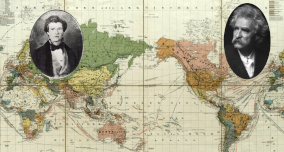The county's earliest known Euro-American resident was Edward Fitzgerald, a fur trader and trapper who came to the Muskegon area in 1748 and who died there, reportedly being buried in the vicinity of White Lake. Between 1790 and 1800, a French-Canadian trader named Joseph La Framboise established a fur-trading post at the mouth of Duck Lake. Between 1810 and 1820, several French-Canadian fur traders, including Lamar Andie, Jean Baptiste Recollect, and Pierre Constant, had established fur-trading posts around Muskegon Lake.
Euro-American settlement of Muskegon began in earnest in 1837, which coincided with the beginning of the exploitation of the area's extensive timber resources. The explosion of the lumber industry in 1837 inaugurated what some regard as the most romantic era in the history of the region. Lumbering in the mid-19th century brought many settlers, particularly from Germany, Netherlands, and Sweden.
Some Muskegon neighborhoods began as separate villages. Bluffton was founded as a lumbering village in 1862 in Laketon Township. It had its own post office from 1868 until 1892. Muskegon annexed it in 1889.
